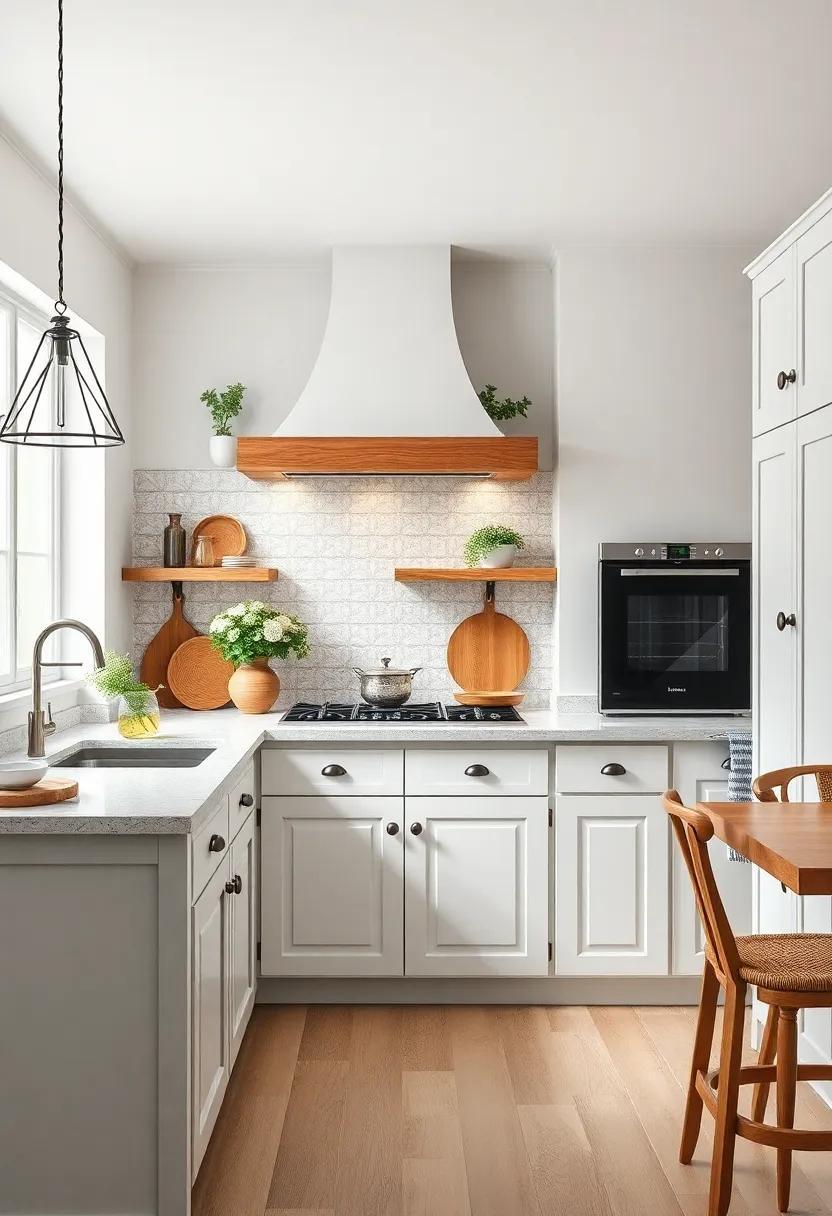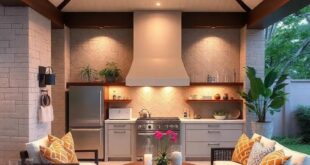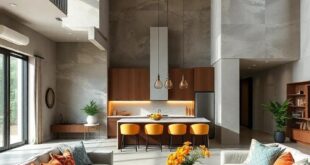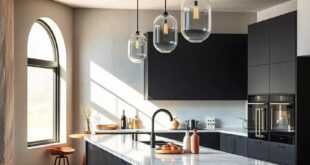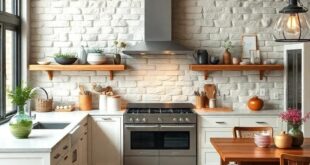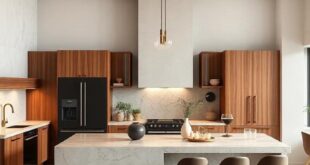In an age where modernity often dominates design trends,there lies a quiet enchantment within the rustic embrace of European farmhouse kitchens. These spaces,steeped in history and simplicity,invite us to slow down and appreciate the artistry of handcrafted details and the warmth of natural materials.With their inviting atmospheres, open layouts, and a charming blend of functionality and beauty, farmhouse kitchens are more than just culinary spaces; they are a festivity of tradition, family, and a lifestyle rooted in the past. In this article, we will explore the timeless allure of these kitchens, tracing their origins and the elements that continue to captivate hearts and inspire contemporary design. Join us on a journey through the essence of farmhouse charm, where each corner tells a story and every detail invites you to linger a little longer.
Embodying Rustic Elegance With Distinctive Farmhouse Elements
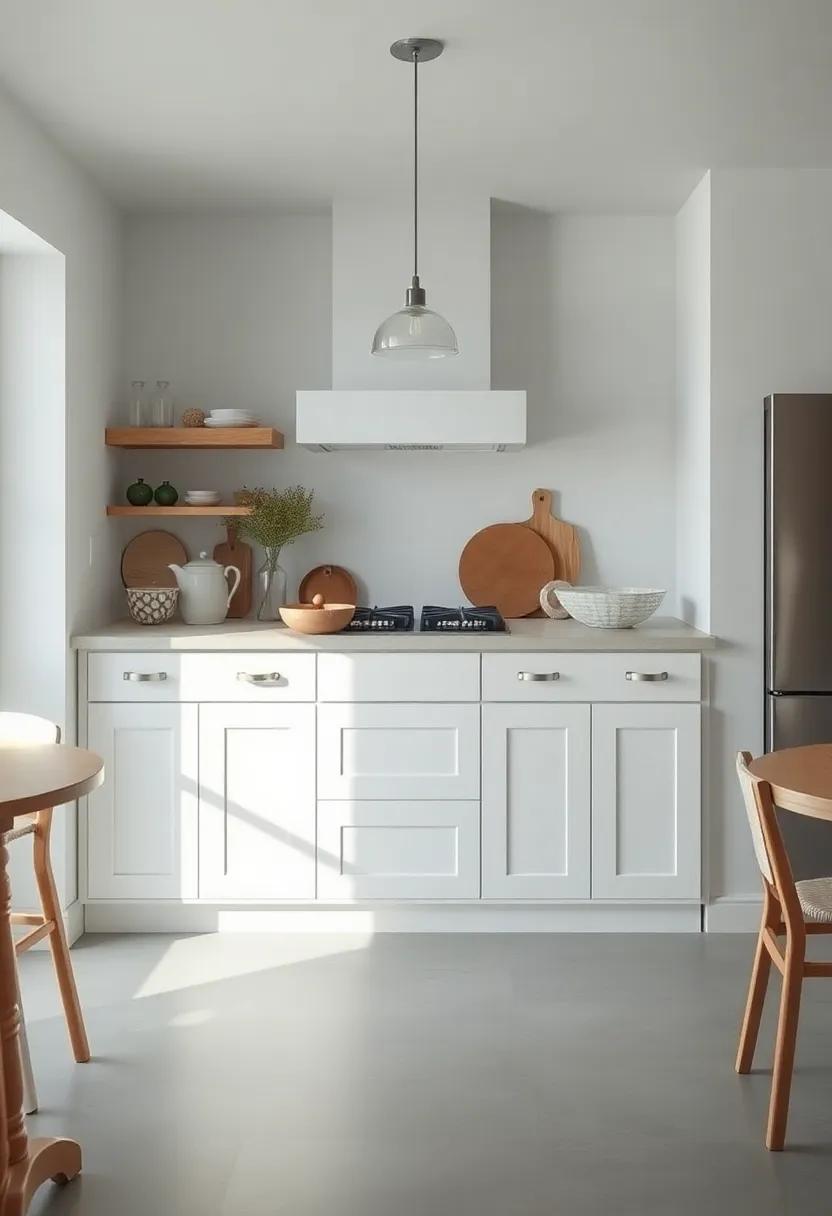
At the heart of every enchanting European farmhouse kitchen lies a seamless fusion of rustic charm and elegant design. Characterized by exposed wooden beams and a warm colour palette, these kitchens offer an inviting atmosphere that beckons family and friends. Natural materials play a pivotal role, with elements such as reclaimed wood, stone finishes, and vintage ceramics that not only enhance the aesthetic but also tell a story of tradition and craftsmanship. Accents like handcrafted cabinetry and wrought-iron details further elevate the space, lending a distinct personality that pays homage to its farm-to-table roots.
To bring these enchanting features into a modern kitchen, consider incorporating thoughtful details that reflect the essence of the countryside. Here are some distinctive elements to consider:
- Open shelving with antique dishes: Showcasing curated collections adds character and warmth.
- Subway tiles in muted colors: A classic choice that enhances the culinary backdrop.
- Farmhouse sinks: Practical yet striking, they serve as a focal point in the workspace.
- Decorative lighting fixtures, like lanterns: Bringing a touch of nostalgia while providing ambiance.
Crafted with love, these elements not only embody rustic elegance but also ensure your kitchen becomes a welcoming heart of your home.
The Heart of the Home: Capturing the Essence of the Farmhouse Kitchen
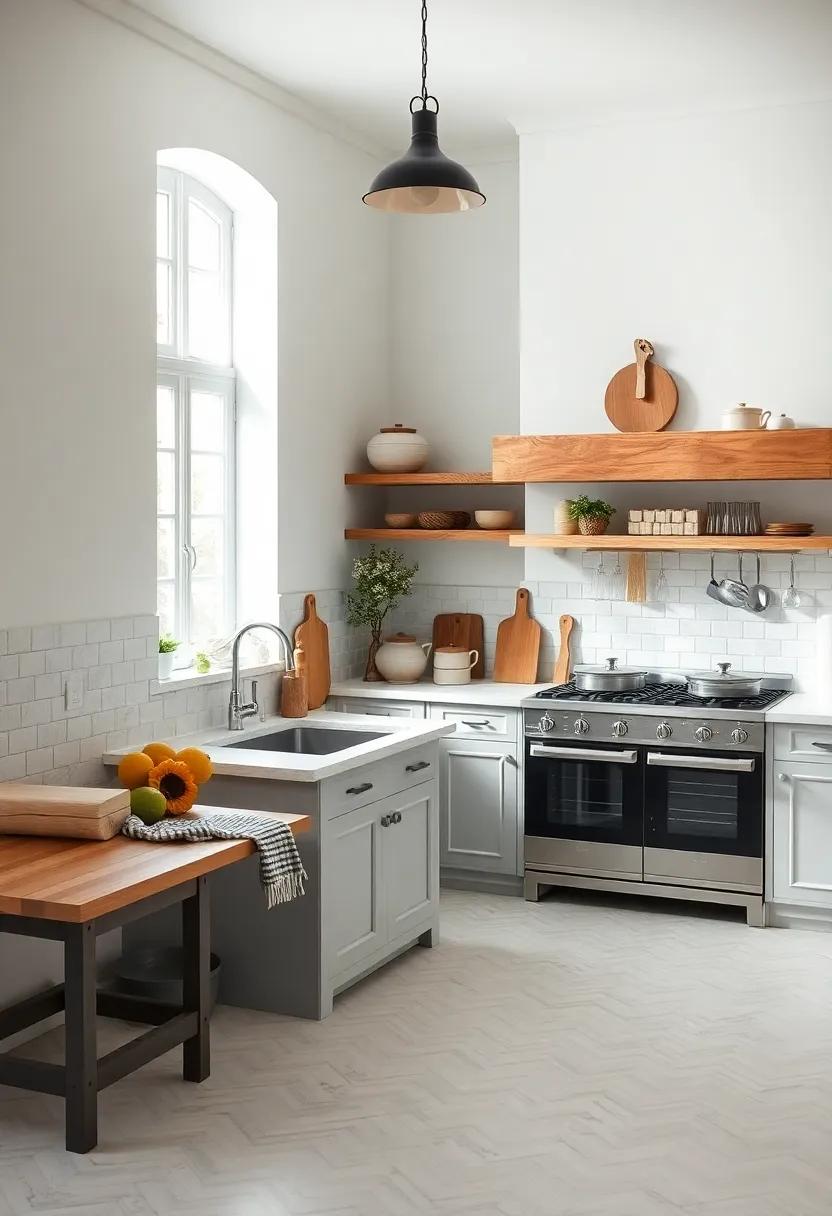
In the heart of every farmhouse, the kitchen stands as a revered space where practicality meets aesthetic charm. It embodies a warm invitation that calls family and friends alike to gather,share stories,and create lasting memories. The beauty of a European farmhouse kitchen lies in its ability to marry rustic elements with modern conveniences, offering a harmonious blend that feels both nostalgic and contemporary. From wooden beams overhead to the soft glow of pendant lights, every detail contributes to a chic yet welcoming ambiance that transcends time.
Essential characteristics that define the allure of these spaces include:
- Natural Materials: Rich woods, wrought iron, and ceramic tiles reminiscent of bygone eras.
- Open Layouts: spacious, inviting designs that encourage connection and interaction.
- Functional Decor: Vintage kitchenware and linens that are not just beautiful but also practical.
- Color Palette: Soft, earthy tones that create a serene backdrop for culinary creativity.
To effectively capture the essence of the farmhouse kitchen,one must consider the incorporation of both style and function. Features such as a large farmhouse sink, a rustic dining table, and open shelving bring character while serving everyday needs. Here’s a swift overview of popular elements that highlight the timeless charm:
| Element | Description |
|---|---|
| Farmhouse Sink | Deep and wide, perfect for washing larger dishes. |
| Wooden Beams | Add architectural interest and a rustic touch. |
| Butcher Block Island | Offers additional workspace and a warm focal point. |
| Antique Accents | Subtle vintage items enhance the nostalgic feel. |
Natural Light’s Role in Creating Inviting Farmhouse Spaces
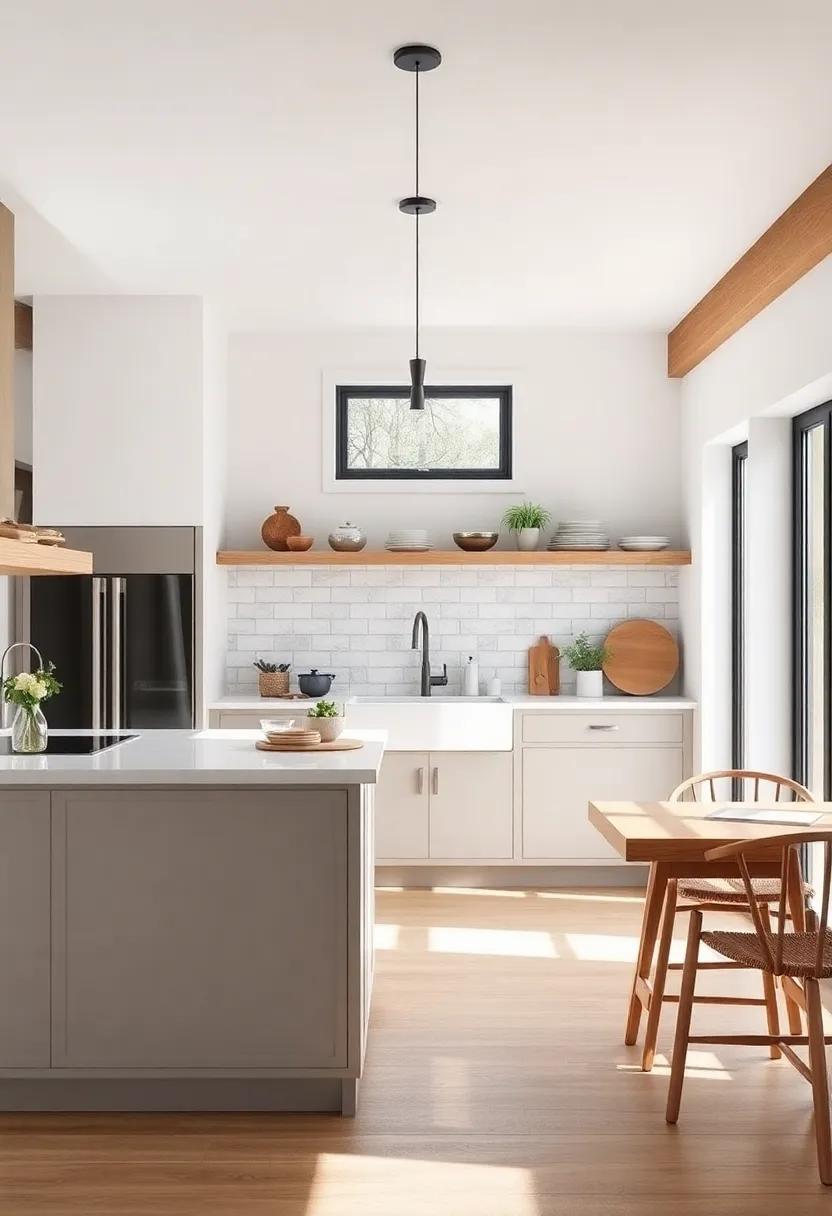
Natural light serves as a vital ingredient in the recipe for inviting farmhouse spaces, especially within the heart of a home—the kitchen. When sunlight filters through large windows or is captured in open layouts, it creates a warm and welcoming ambiance that enhances the rustic charm typical of European farmhouses. Wooden beams, aged cabinetry, and vintage accents come alive under the gentle glow of daylight, highlighting textures and colors that might otherwise be overlooked. This interplay of light encourages an atmosphere that draws people together, fostering connections during family meals or casual gatherings.
To maximize the benefits of natural light in these kitchen spaces, consider the following elements:
- Large Windows: Floor-to-ceiling or expansive window designs invite generous sunlight, making the kitchen feel larger and more connected to the outdoors.
- Light-colored Surfaces: White or soft pastel hues reflect light efficiently, further brightening the surroundings and exuding a fresh feel.
- Open Shelving: Using open shelves rather of cabinets can allow light to flow freely, illuminating the displayed dishes and adding to the kitchen’s overall charm.
Here’s a quick comparison of common lighting elements found in farmhouse kitchens:
| Feature | Effect on Space |
|---|---|
| Skylights | Enhances vertical light flow, elevating ceiling heights visually. |
| Transom Windows | Allows light to filter between rooms while maintaining privacy. |
| French Doors | Creates seamless access to outdoor spaces, bringing nature in. |
Timber, Stone, and Metal: A harmonious Blend in Kitchen Design
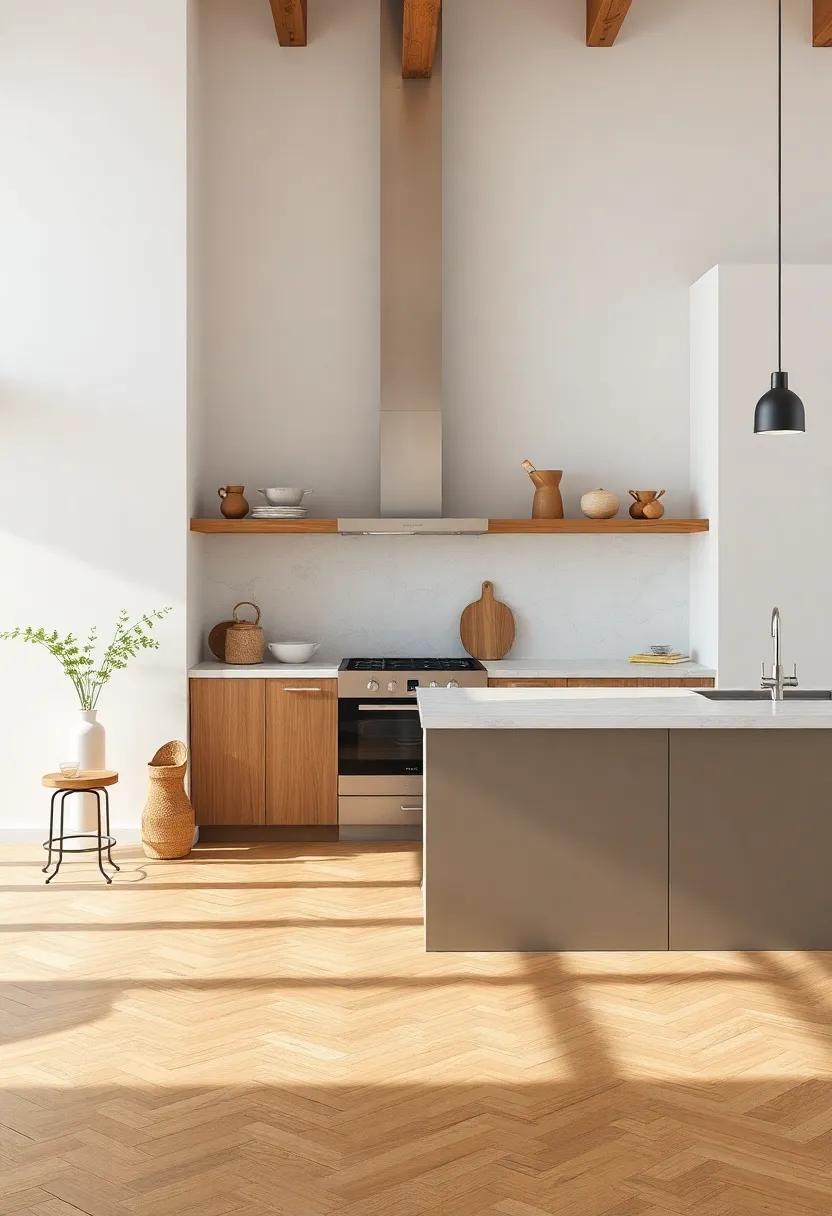
In the heart of a European farmhouse kitchen, the synergistic combination of timber, stone, and metal brings rustic elegance to the forefront. The warm hues of reclaimed wood cabinets and counters invite a cozy ambiance, while stone surfaces, whether in the form of countertops or backsplashes, add a sense of grounding and texture. Metal accents, be it wrought iron light fixtures or copper hardware, introduce a hint of sophistication, creating a beautiful tension between the organic and the industrial. These elements don’t just coexist; they interact, producing a space that feels both lived-in and timeless.
When designing a kitchen around these materials, consider the following elements to achieve that perfect balance:
- Choose a color palette that harmonizes the natural tones of wood with the coolness of stone and the sheen of metal.
- Incorporate open shelving crafted from reclaimed wood,displaying both functionality and artistry.
- Opt for fixtures with a patina finish, embodying a vintage charm that complements the farmhouse aesthetic.
To further illustrate the interplay of these materials, refer to the table below to see how various combinations can transform your kitchen into a stunning fusion of style and practicality:
| Material | Style Impact | Best Uses |
|---|---|---|
| Timber | Creates warmth and coziness | Cabinets, beams, countertops |
| stone | Adds texture and durability | Countertops, backsplashes, flooring |
| Metal | Introduces elegance and modernity | Light fixtures, handles, appliances |
Color Palettes That Inspire Comfort in European Farmhouse Kitchens
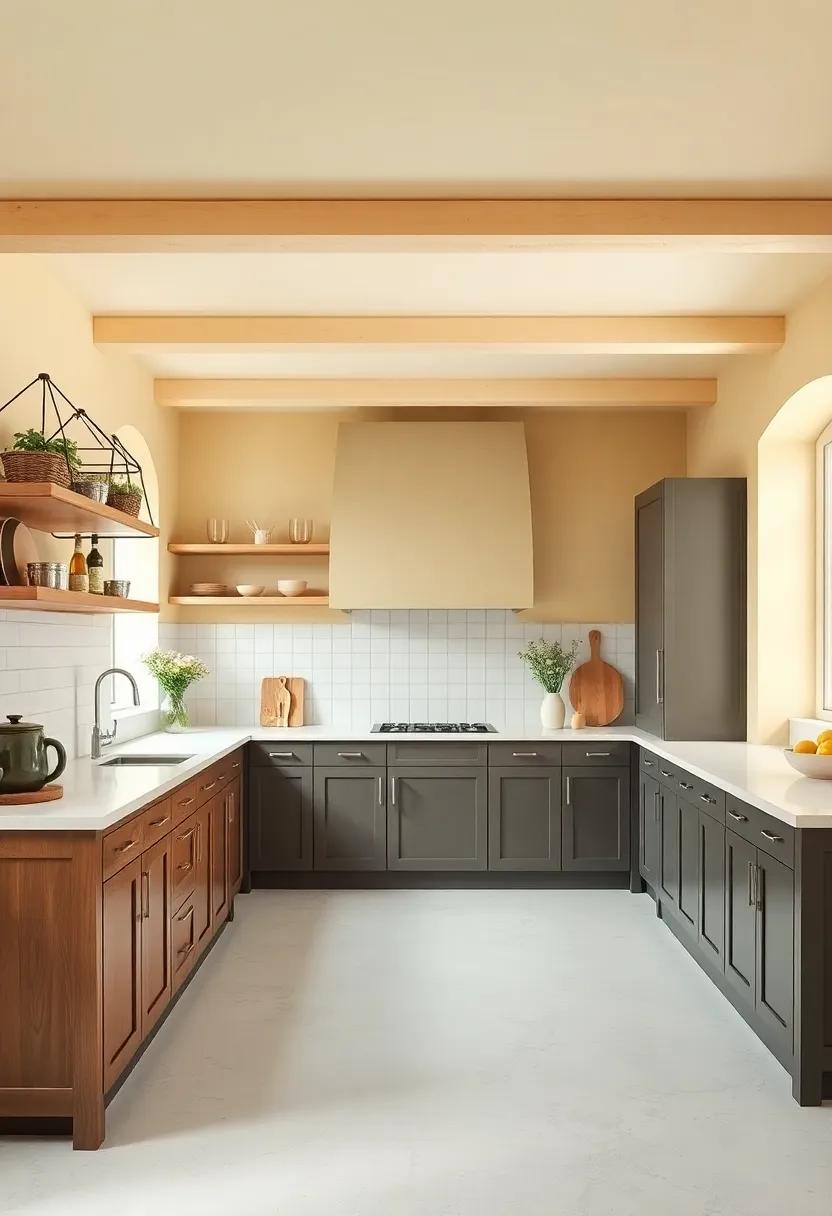
When it comes to designing cozy European farmhouse kitchens, color palettes play a crucial role in creating a warm and inviting atmosphere. Soft, muted tones often take center stage, imbuing the space with a sense of serenity. Consider these inspiring shades:
- Warm Whites: Shades like creamy off-white or antique white provide a classic backdrop, enhancing natural light.
- Earthy Greens: Sage and olive greens echo nature, bringing a refreshing yet grounded feel that’s perfect for harmony.
- Rustic Blues: Dusty blues evoke the sky and sea, offering a calming influence that pairs beautifully with wooden textures.
- Soft Grays: Subtle grays create a balance, acting as a sophisticated canvas that complements rustic decor.
Combining these tones effectively can help in crafting a space reminiscent of quaint European farms. To bring dimension to your kitchen, incorporate touches of warmth through natural wood accents, textiles, and decorative elements.A harmonious palette can beautifully bridge rustic charm and contemporary comfort:
| color | Effect | Best Used With |
|---|---|---|
| Warm Whites | Brightens and expands space | Bold contrast colors |
| earthy Greens | Brings nature indoors | Natural wooden elements |
| Rustic Blues | Creates tranquility | Neutral furnishings |
| Soft Grays | Adds sophistication | Vibrant decor accents |
Handcrafted Furniture and Unique Pieces for Authenticity
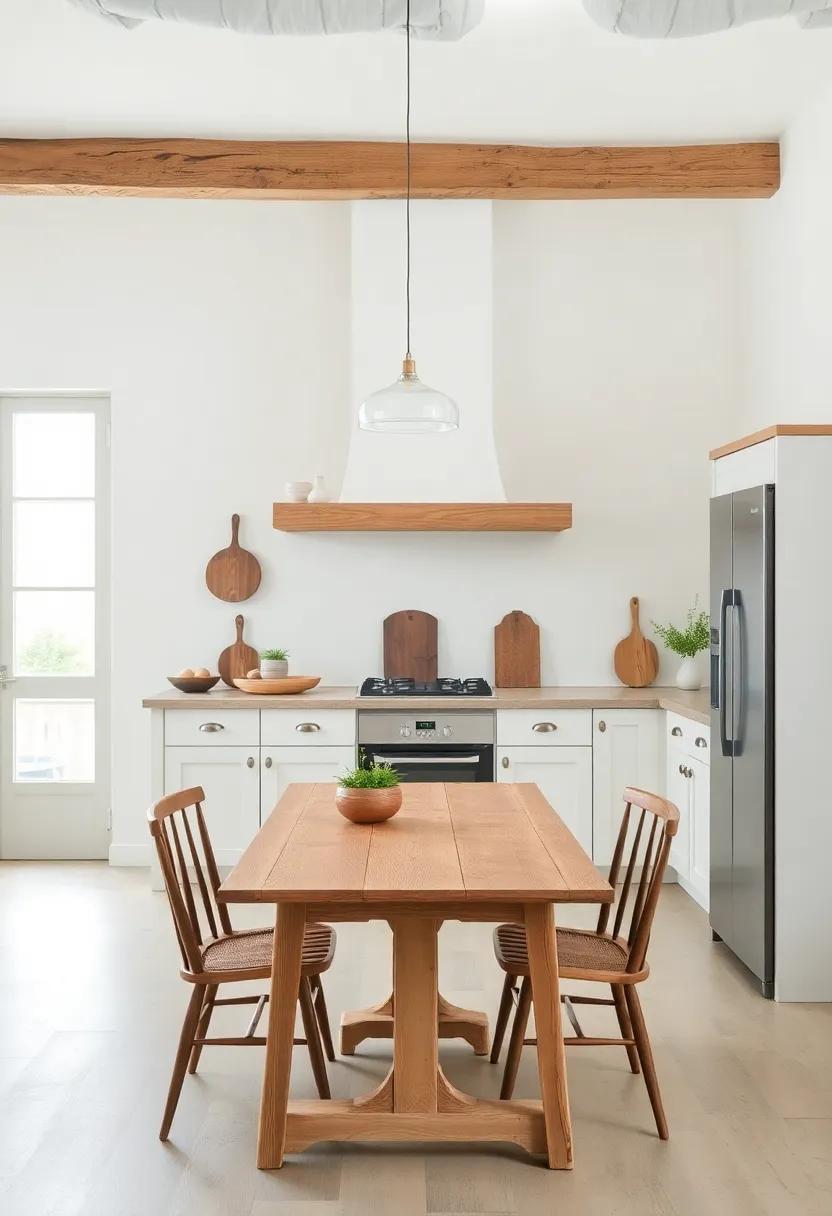
In the heart of every European farmhouse kitchen lies an array of handcrafted furniture that speaks to the soul of authentic living. These unique pieces are more than mere functional items; they tell stories of skilled artisans who poured their passion into every curve, grain, and finish. From rustic wooden cabinets to elegantly carved dining tables, each item radiates a warmth that elevates the culinary experience. consider incorporating these essentials into your space:
- Weathered Farm Tables - A gathering place for family and friends.
- Open Shelving – Perfect for showcasing handmade pottery and heirloom dishware.
- Vintage Dressers – Ideal for storing linens while adding character.
The allure of these furnishings lies not just in their aesthetics but also in their history and individuality. Each piece carries a distinctive charm,making them the perfect complement to the rustic decor typically found in farmhouse kitchens. The combination of natural materials and conventional craftsmanship fosters an inviting environment, encouraging shared meals and cherished moments.When selecting furniture,look for attributes such as:
| Attribute | Importance |
|---|---|
| Durability | Ensures longevity in daily use. |
| Unique Design | Enhances the character of the space. |
| Eco-Pleasant Materials | Supports lasting living. |
Choosing the Right Lighting Fixtures to Enhance Farmhouse Charm
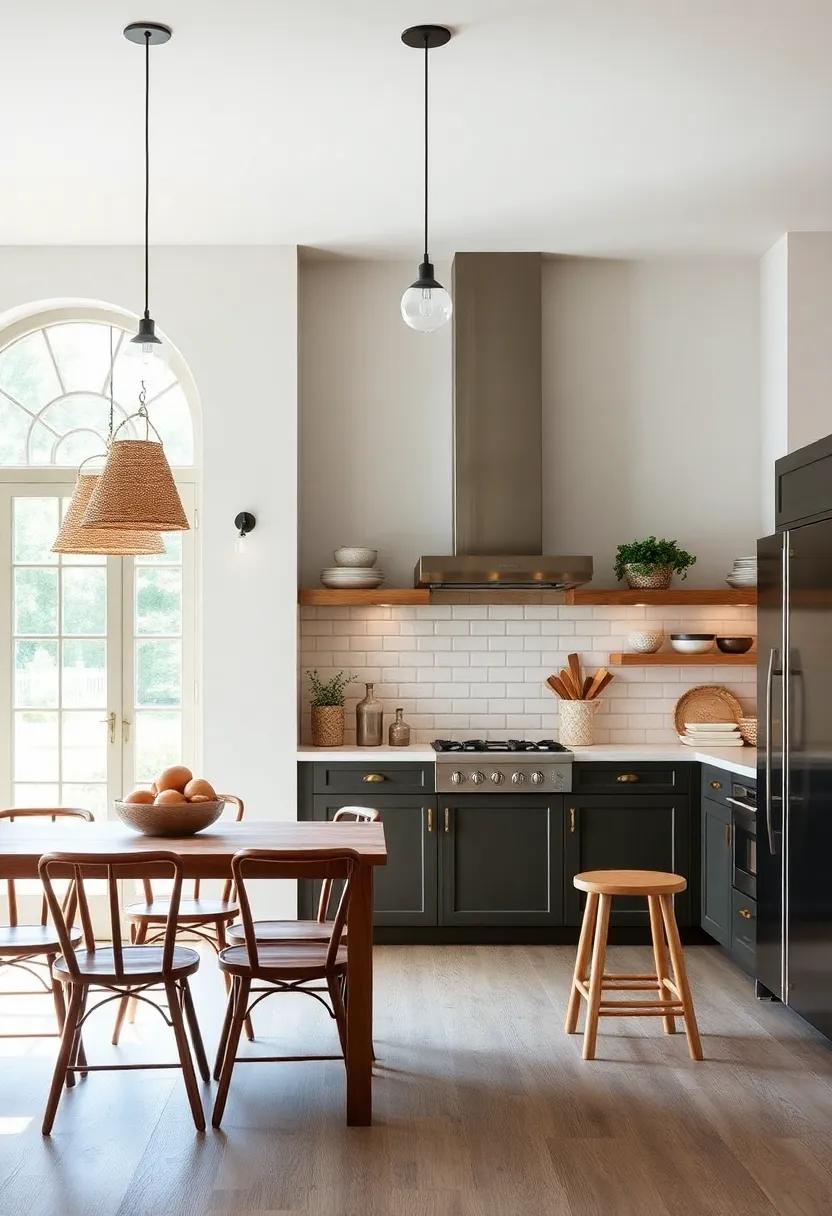
When it comes to perfectly capturing the essence of a European farmhouse kitchen, choosing the right lighting fixtures plays a pivotal role. These fixtures should harmonize with rustic aesthetics while providing functional illumination.Look for options that feature natural materials such as wood, wrought iron, or antique brass. A few excellent choices include:
- Pendant lights – Ideal for hanging above kitchen islands or dining areas.
- Chandeliers – A statement piece that adds elegance without compromising the rustic charm.
- Wall sconces – Great for illuminating walls and adding depth to a space.
Another essential aspect is the color temperature of your lighting.Opt for fixtures that emit a warm glow, ideally between 2700K to 3000K, to create a cozy atmosphere characteristic of farmhouses. You can enhance this look by pairing different types of fixtures. For example, consider using a combination of:
| Type of Fixture | Ideal Locations |
|---|---|
| Pendant Lights | Over countertops and islands |
| Recessed lighting | Throughout the kitchen for an even wash of light |
| Under-cabinet Lighting | Above work surfaces to enhance task lighting |
Open Shelving: A Modern Twist on Classic Kitchen Storage
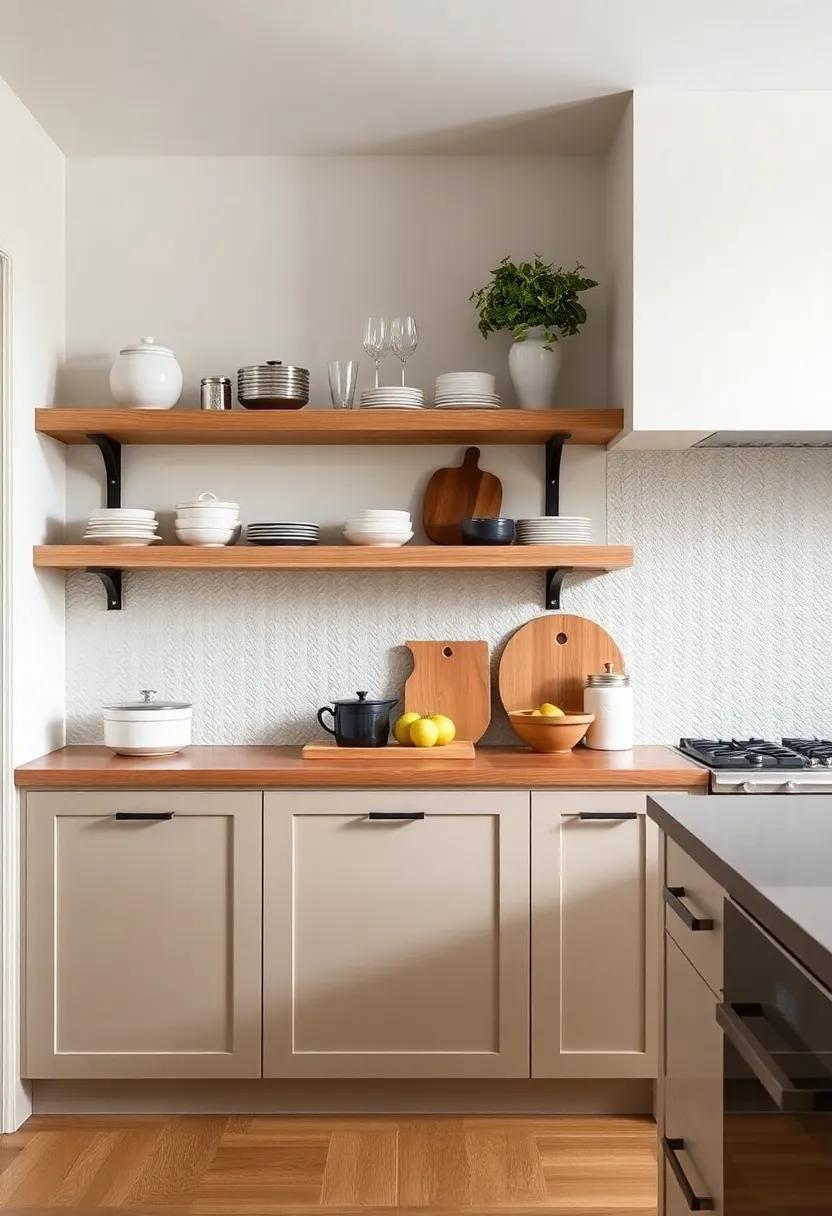
open shelving brings a refreshing and contemporary approach to kitchen storage while maintaining the rustic appeal typical of European farmhouse aesthetics. This design element allows for easy access and organization, showcasing beautifully curated dishware, herbs, and cookbooks. By opting for natural wood finishes or distressed paint, homeowners can create a harmonious blend of functionality and charm. The open shelves invite creativity, providing an prospect to mix and match colors and textures that reflect personal style.
Incorporating open shelves can transform the typical kitchen into a warm, welcoming hub for family gatherings and culinary adventures. When styled correctly, these shelves can serve as a focal point, drawing the eye and elevating the kitchen’s overall ambiance. Consider the following to enhance the charm:
- Layering Items: Mix larger items at the back with smaller pieces at the front.
- Using Baskets: Incorporate woven baskets for storing smaller items like spices or utensils.
- Plant Life: Add potted herbs to introduce color and functionality.
| Material | Effect | Best For |
|---|---|---|
| Wood | Warmth and rustic charm | Dishware showcases |
| metal | Industrial edge | cookbook displays |
| Glass | light and airy feel | Decorative items |
Defining Space With Vintage Accessories and Personal Touches

In the warm embrace of a European farmhouse kitchen, vintage accessories play a crucial role in defining the space, creating a narrative that is as inviting as it is functional. To incorporate these treasured pieces, consider using timeworn utensils, rustic pottery, and well-loved linens that evoke a sense of nostalgia. These items not only serve practical purposes but also act as conversation starters,rich with stories of culinary adventures and family traditions. A cherished ceramic bowl, for instance, can be a striking centerpiece on the table or a charming fruit holder, instantly adding character and a personal touch to the environment.
Complementing the vintage elements with personal touches further enhances the kitchen’s charm. Here are some ideas to infuse your personality into the space:
- Family Heirlooms: Display inherited dishes or glassware that remind you of beloved relatives.
- Custom Artwork: Hang local artwork or personal creations that reflect your aesthetic.
- Photos: Create a gallery wall featuring your family moments, framed in mismatched vintage frames.
When thoughtfully arranged, these accessories and personal items serve to not only define the aesthetic of the kitchen but also transform it into a space that resonates with warmth and individuality, perfectly embodying the spirit of farmhouse living.
Sustainable Design Choices for Eco-Friendly Farmhouse Kitchens
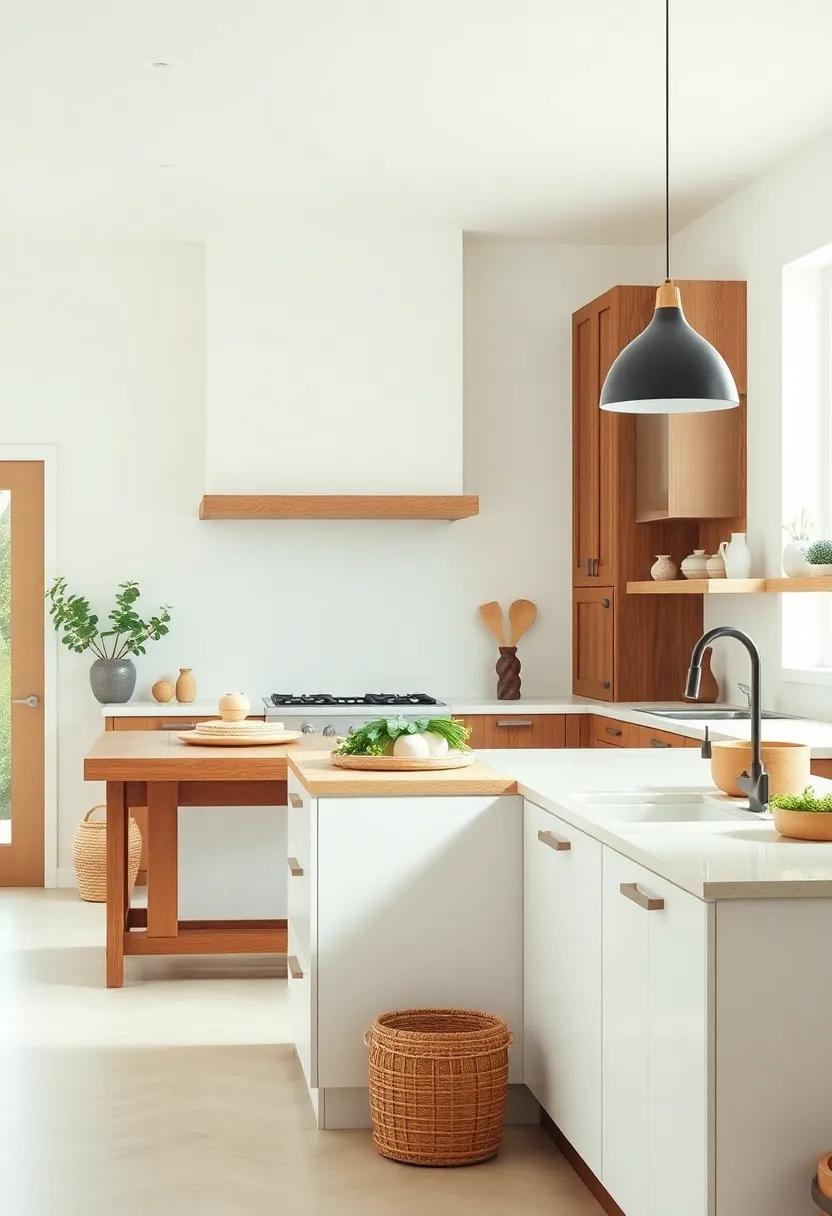
When curating an eco-friendly farmhouse kitchen, the key is to prioritize materials and practices that minimize environmental impact while maintaining the rustic charm. One effective way to achieve this is by selecting sustainable materials for cabinetry and countertops. Opt for reclaimed wood, wich not only adds character but also reduces the demand for new timber. Additionally, consider bamboo as an alternative for cabinetry or flooring, as it is a fast-growing resource that performs excellently over time. Pair these choices with low-VOC paints or natural finishes to ensure a healthier indoor environment while showcasing a beautiful aesthetic.
Incorporating energy-efficient appliances is another vital aspect of fostering sustainability in your kitchen. Look for appliances with the Energy star rating, which guarantees lower energy consumption without compromising performance. Furthermore, adding a water-saving faucet can considerably reduce water usage, aligning with eco-friendly principles.To highlight your commitment to sustainability, consider displaying a small herb garden or potted plants. This not only enhances the kitchen’s charm but also allows for fresh herbs at your fingertips,promoting a farm-to-table philosophy.
The Allure of Farmhouse Sinks: Functionality Meets Style
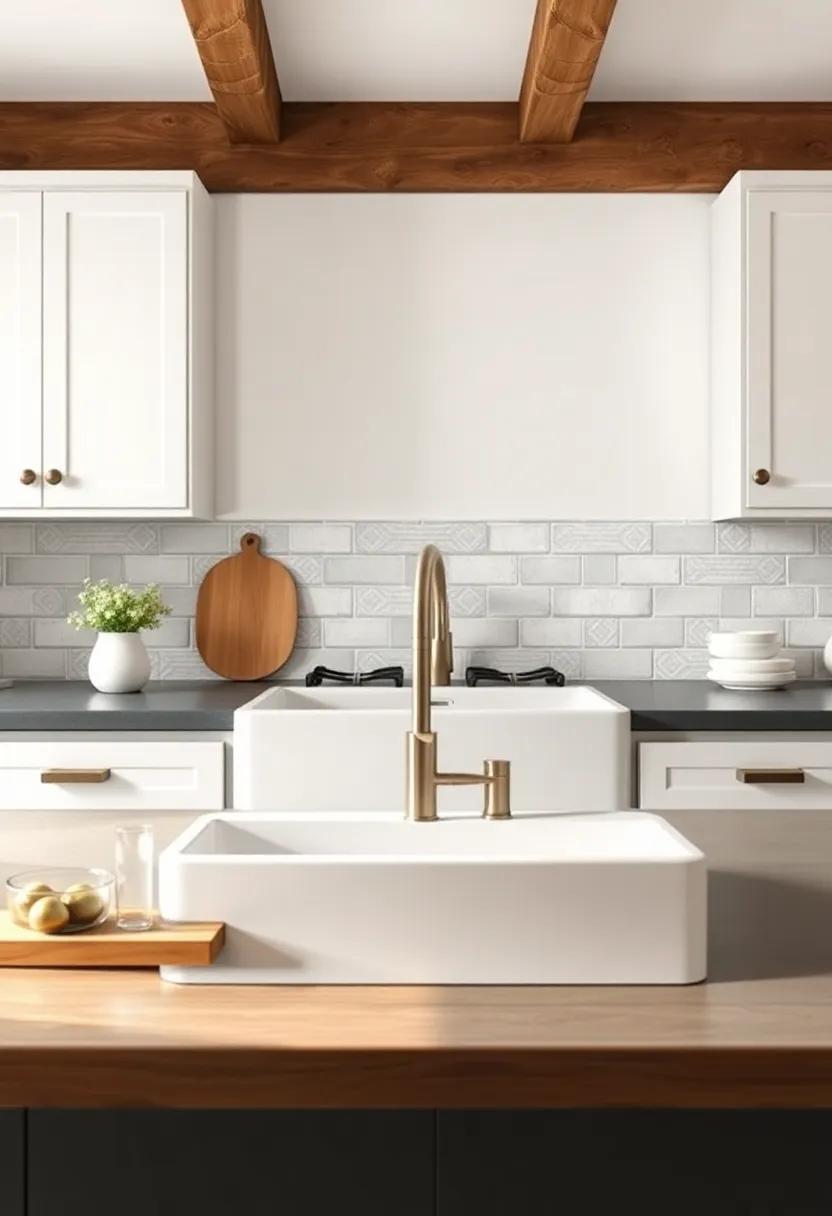
The centerpiece of many European farmhouse kitchens is undeniably the farmhouse sink, a blend of practicality and aesthetic appeal. Its spacious basin design allows for effortless washing of large pots and pans,making it a dream for culinary enthusiasts. Not limited to functionality,these sinks often showcase styles that reflect rustic charm,including materials such as fireclay,stainless steel,and cast iron,each offering unique benefits while complementing a warm kitchen ambiance.
When choosing a farmhouse sink, consider the following key aspects:
- Size and Depth: Ideal for accommodating sizable cookware and ensuring ease while washing dishes.
- Material: Select a finish that aligns with your kitchen décor, from sleek modern finishes to textured traditional looks.
- Installation Style: Options vary from under-mount to flush-mount, affecting the overall aesthetic and functionality.
| Material | Durability | Maintenance |
|---|---|---|
| Fireclay | Highly durable, resistant to chipping | Easy to clean; requires regular polishing |
| stainless Steel | Resistant to rust and stains | Simple daily maintenance with soap and water |
| Cast Iron | Long-lasting but can chip | Needs occasional re-glazing for longevity |
Creating Cozy Nooks for Gathering and Connection in Kitchens
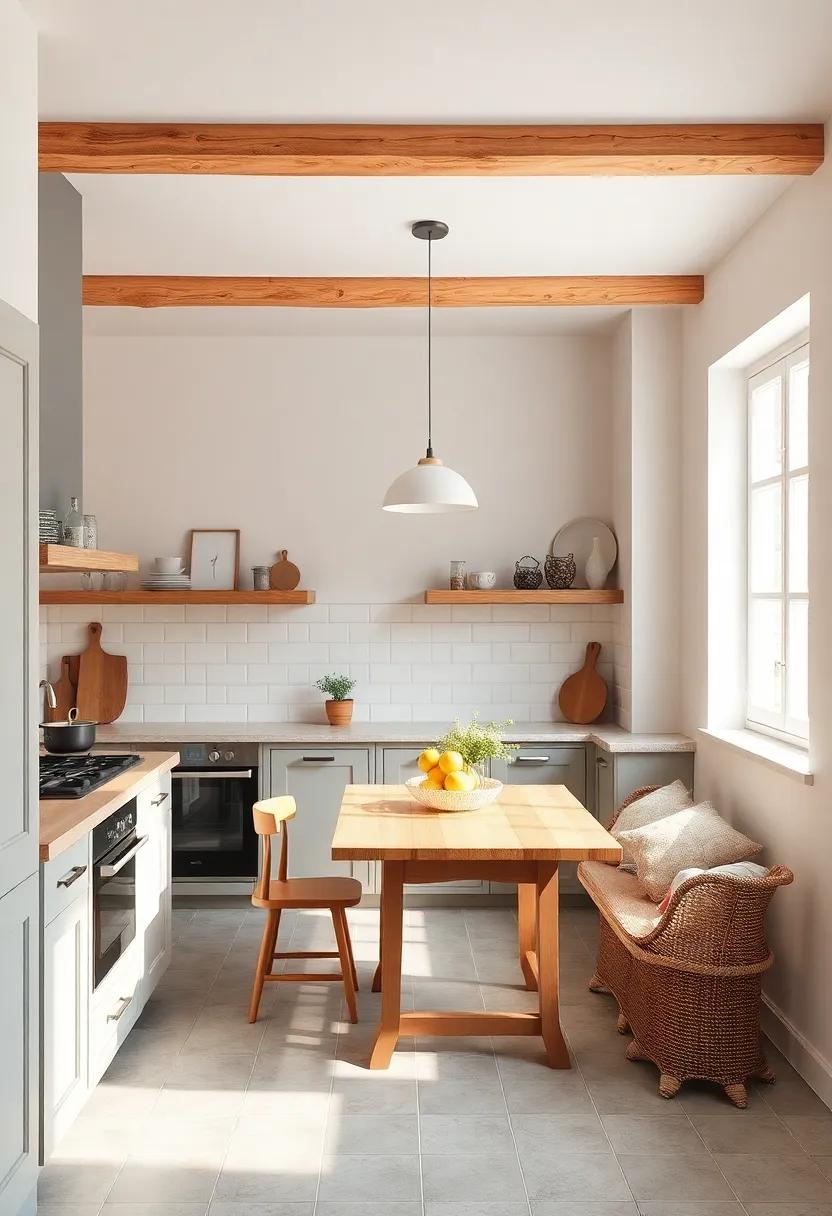
Transforming a kitchen into a warm and inviting space can be achieved by creating cozy nooks that encourage gathering and connection. To start, consider incorporating ample seating options that blend functionality with comfort. whether it’s a rustic farmhouse table surrounded by mismatched chairs or a spacious island outfitted with plush bar stools, varying heights and styles can add character. Enhance the warmth with elements like soft cushions and throws in fabrics that complement the kitchen’s palette. Layering textures provides a tactile experience and invites lingering conversations over cups of coffee or family meals.
lighting plays a crucial role in establishing an atmosphere of intimacy and warmth. Opt for soft, ambient lighting through pendant lamps or strategically placed wall sconces that highlight cozy corners without overwhelming the space. Adding decorative touches like fresh flowers, candles, or even a curated bookshelf nearby can enrich the area, making it a perfect retreat for shared moments. Highlighting some simple elements can enhance your nook:
- Natural materials: Consider wood,stone,or wicker accents.
- Color scheme: Soft, muted tones can create a soothing backdrop.
- Personal touches: Incorporate family photos or artwork that tells your story.
Embracing Imperfection: The Beauty of Reclaimed Materials
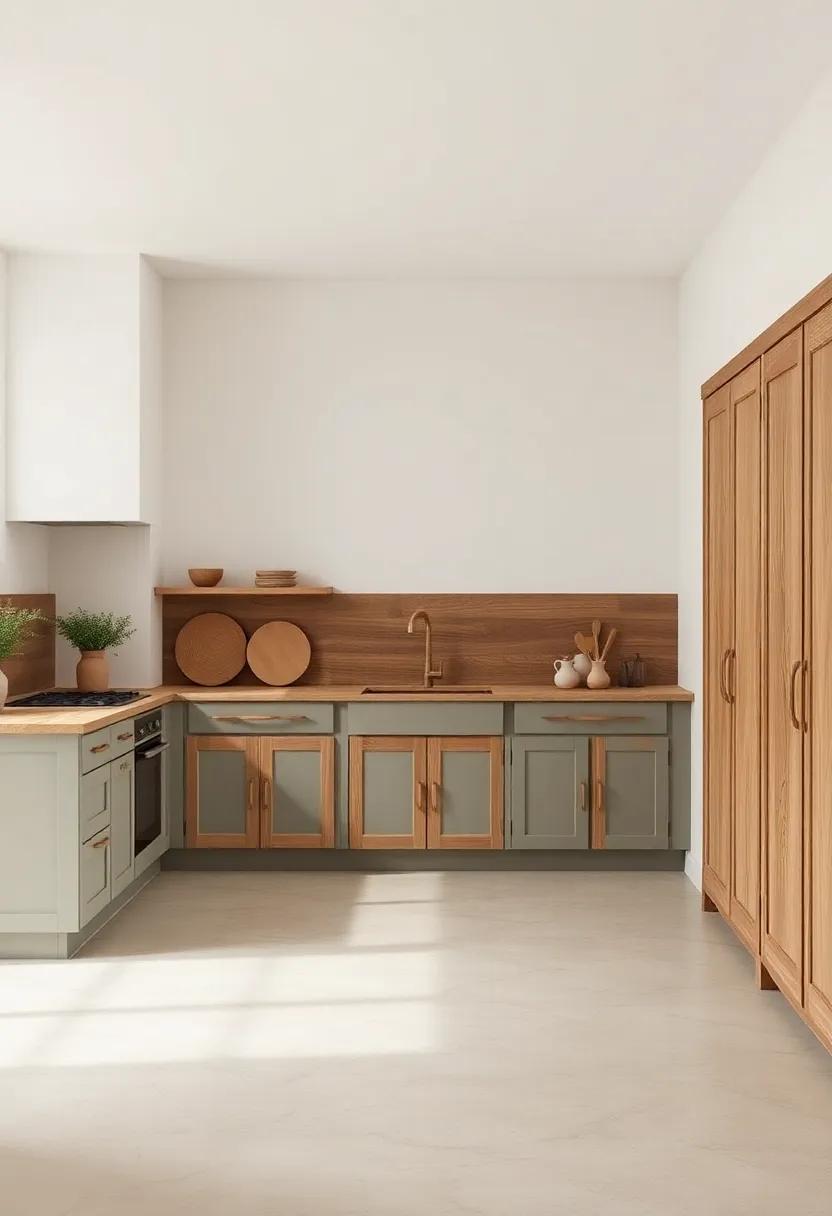
The charm of reclaimed materials lies in their stories, each imperfection bearing witness to a rich history.In the heart of a European farmhouse kitchen, reclaimed wood beams, weathered to perfection, exude warmth and character. These materials not only add a touch of rustic elegance but also promote sustainability by repurposing resources that would or else be lost. Their unique textures and hues create an inviting atmosphere where functionality meets artistry. Embracing these elements fosters a deeper connection to the environment and the craftsmanship that goes into creating such timeless pieces.
moreover, incorporating reclaimed materials encourages a distinctive design that reflects individuality. Consider the following key features that highlight their beauty:
- Unique Aesthetic: no two pieces are alike, each bringing its own flair.
- Rich Patina: Time-worn surfaces tell a story, adding depth to the decor.
- Sustainability: Reclaimed materials minimize waste and environmental impact.
These attributes make reclaimed materials an ideal choice for designing a kitchen that harmonizes with nature while celebrating imperfections as beautiful elements of the overall design. Whether used in cabinetry, flooring, or accent pieces, they form a foundation of enduring style that is both practical and enchanting.
Infusing Cultural heritage into European Kitchen designs
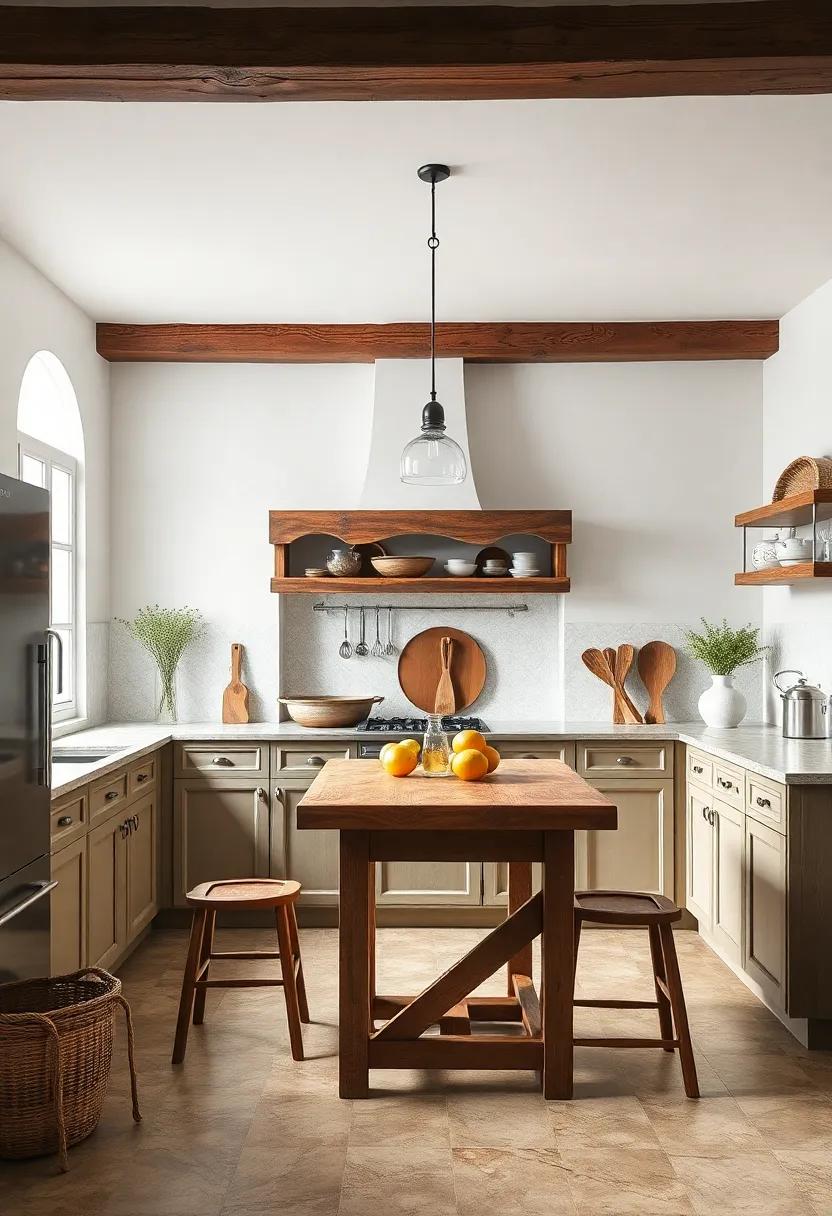
Incorporating elements of cultural heritage into European kitchen designs creates a warm,inviting atmosphere that pays homage to traditions while embracing modern comforts. The charm of a farmhouse kitchen is often enhanced by distinctive features such as reclaimed wood beams, handcrafted cabinetry, and artisanal tiles that echo the art of craftsmanship. Country-inspired accents like vintage ceramic pots and woven baskets add a personal touch, telling stories of generations past. The palette typically combines earthy tones with vibrant, rustic hues, fostering a connection to nature and the region’s unique identity.
The thoughtful arrangement of kitchen layouts can reflect regional characteristics, utilizing ergonomic designs that favor family gatherings and communal cooking. Key elements may include:
- Open Floor Plans: Encouraging interaction while cooking.
- Farm Sinks: Blending functionality with traditional aesthetics.
- Herb Gardens: Adding sustainability and freshness to culinary practices.
To further illustrate the diversity of styles across Europe, the following table highlights traditional kitchen elements specific to different regions:
| Region | Key Element | Characteristic |
|---|---|---|
| Provence | Earthenware Pottery | Bright colors inspired by the landscape. |
| Tuscany | Antique Furniture | Reclaimed wood showcases rustic charm. |
| Scandinavia | Minimalist Fixtures | Simplicity with functional elegance. |
Innovative Layouts That Enhance Workflow and Aesthetic Appeal
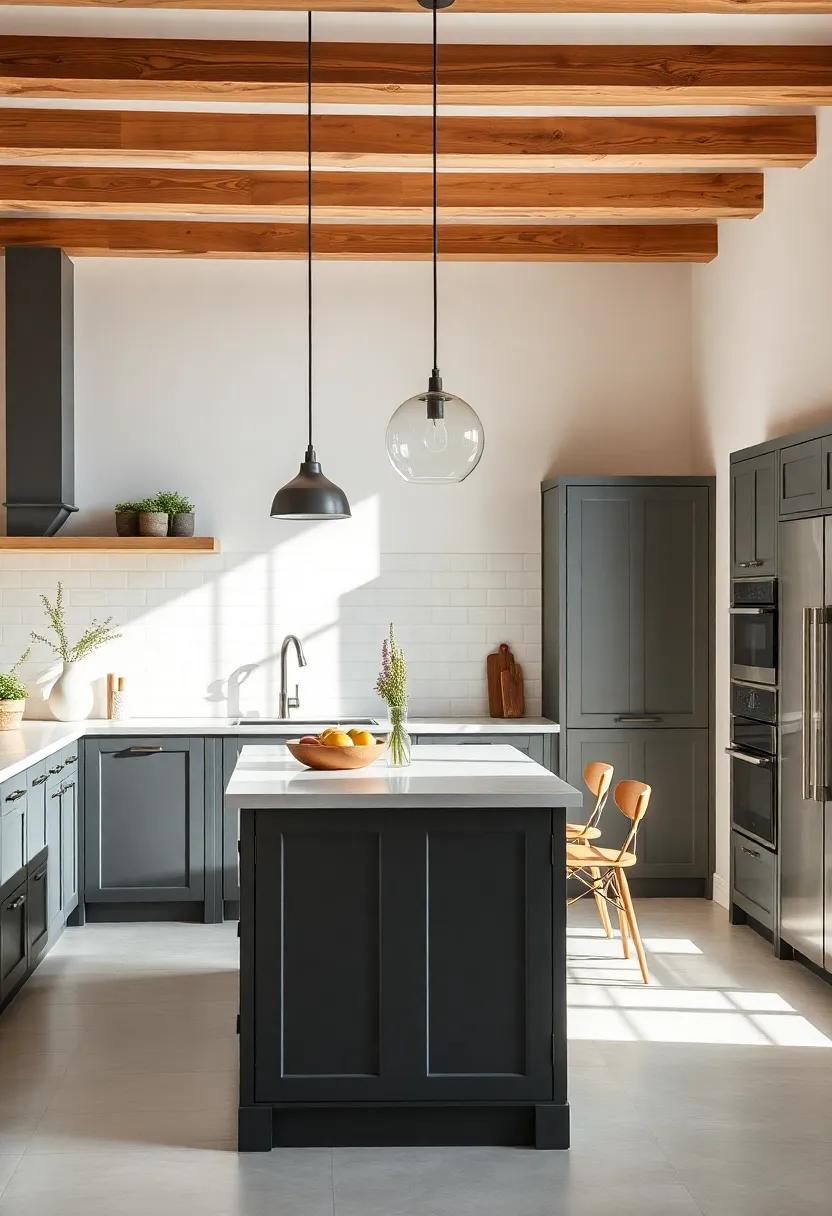
Incorporating the essence of European farmhouse style into modern kitchen designs requires innovative layouts that prioritize both functionality and beauty. Open-plan designs allow for seamless interaction between the kitchen and dining areas,enhancing social gatherings while promoting an inviting atmosphere. By integrating island units, homeowners can create multi-functional spaces that serve as prep areas, dining spots, and even cozy conversation corners. The use of natural materials, such as reclaimed wood and stone countertops, not only pays homage to traditional aesthetics but also enhances the tactile experience of cooking and sharing meals.
Light plays a vital role in setting the perfect ambiance in these kitchens.Large windows and skylights flood the space with natural light, further enlarging the perceived area and showcasing the beauty of rustic textures and colors. Additionally, strategic placement of shelving units allows for easy access to essentials while doubling as decor, with curated items creating a personal touch. To enhance the organization and workflow, incorporating elements like pull-out drawers, deep sinks, and creative storage solutions can transform an ordinary kitchen into an efficient haven that embodies both charm and practicality.
Seasonal Decor Ideas to Refresh Your farmhouse Kitchen Year-Round
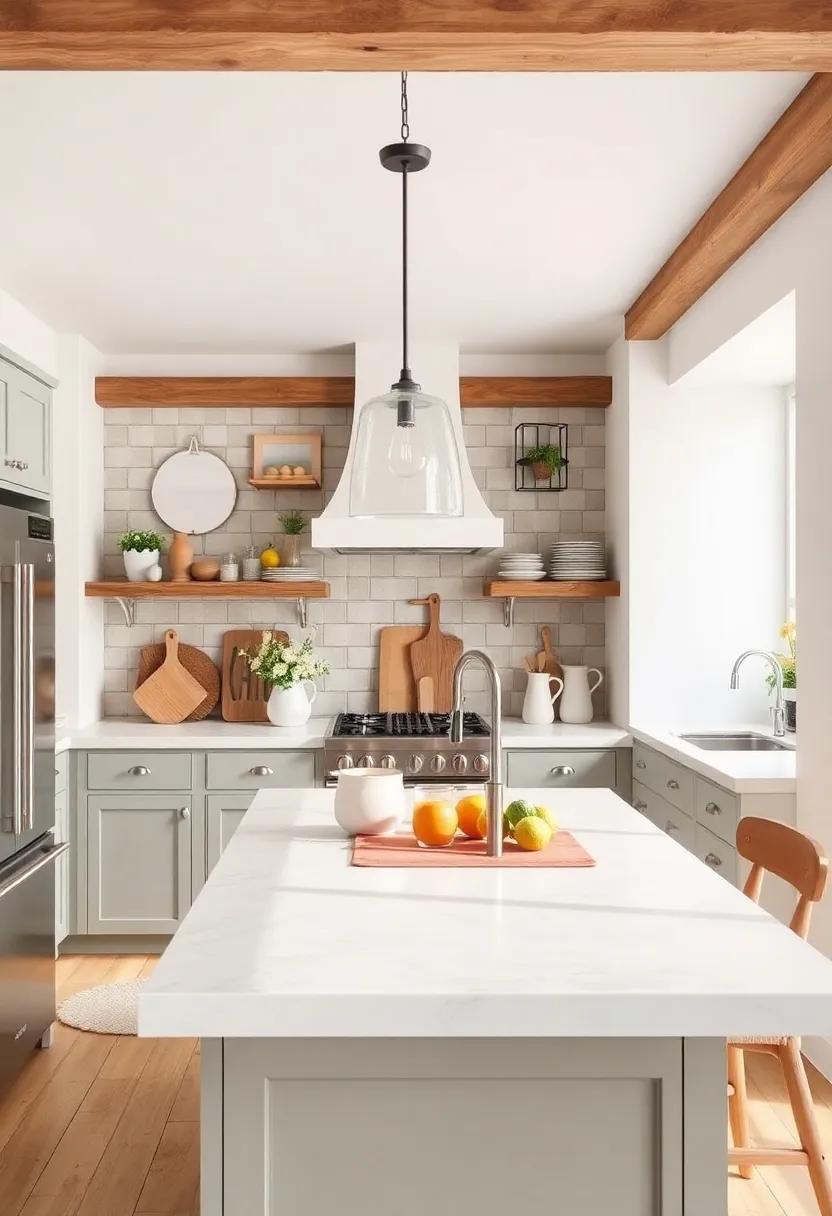
Transforming your farmhouse kitchen to reflect the changing seasons not only enhances its charm but also creates a warm and inviting atmosphere. In spring, consider adding fresh flowers in vintage jars and soft pastel linens for a splash of color. Transition to summer by incorporating vibrant fruits in rustic bowls and lightweight,breezy curtains that flutter in the warm breeze. As autumn approaches, elevate your space with earthy tones, using deep oranges and browns, and introduce elements like small pumpkins and cozy plaid throws. When winter arrives, embrace a snug feel with lush greenery, twinkling fairy lights, and textured textiles that invite warmth.
Moreover,seasonal decor ideas can be succinctly organized for ease of reference:
| Season | Decor Ideas |
|---|---|
| Spring |
|
| Summer |
|
| Autumn |
|
| Winter |
|
The Role of Herbs and fresh Ingredients in Farmhouse Cooking
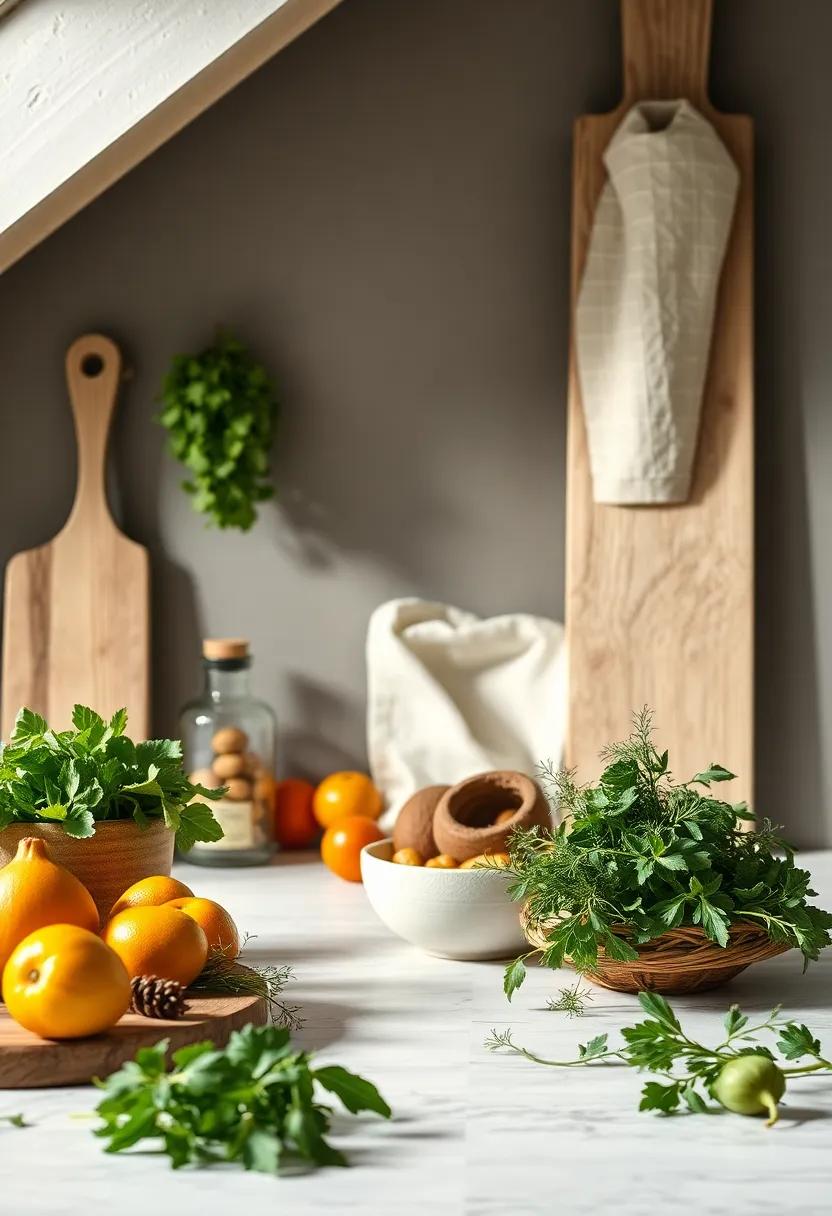
In the heart of a European farmhouse kitchen,the aroma of freshly picked herbs wafts through the air,weaving a fragrant tapestry that enchants the senses. These humble herbs, often grown right outside the door, elevate simple ingredients into culinary masterpieces. The use of basil, rosemary, and thyme adds depth and personality to rustic dishes, while their vibrant colors bring life to the table. Such a connection to the land fosters a profound recognition for what nature provides, allowing home cooks to celebrate seasonal flavors and dish out history plate by plate.
Accompanying herbs are fresh ingredients—garden vegetables and artisanal products—that embody the ethos of farmhouse cooking. Savory tomatoes, earthy potatoes, and crisp greens create a palette of flavors that resonate with the seasons. The following table illustrates some of the key ingredients and their seasonal availability:
| Ingredient | Season |
|---|---|
| Tomatoes | Summer |
| Potatoes | Fall |
| Spinach | Spring |
| Leeks | winter |
This blend of lush herbs and fresh ingredients not only embodies a farm-to-table philosophy but also invokes the warmth of community and tradition. Each meal becomes an expression of care and creativity, where cooks are inspired to experiment while honoring the essence of their roots. Savoring dishes prepared with these wholesome elements not only nourishes the body but also nurtures the soul, reflecting the enduring charm of farmhouse kitchens across Europe.
crafting a Welcoming Ambiance With textiles and Fabrics
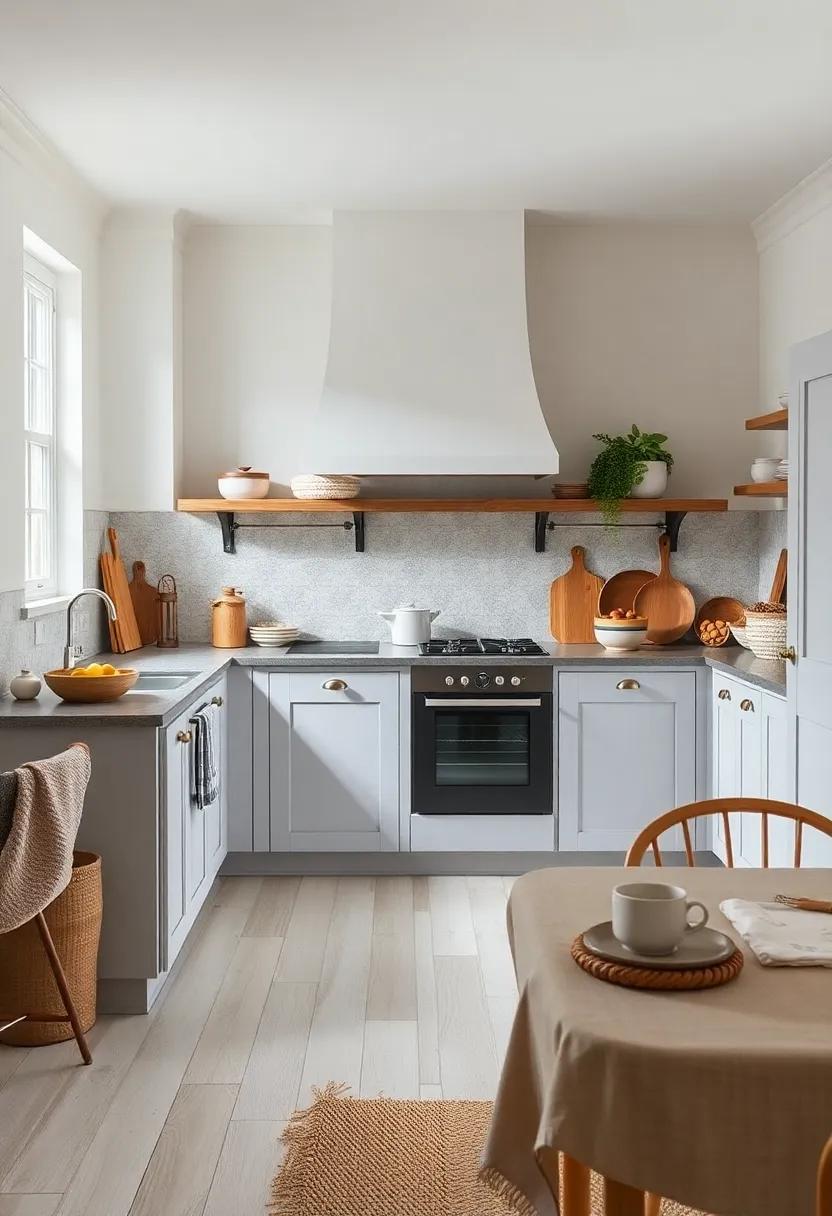
In European farmhouse kitchens, textiles and fabrics play a pivotal role in establishing a cozy and inviting atmosphere. By incorporating tactile elements, you can effortlessly enhance the warmth of your space. Consider using soft linen tablecloths to drape over wooden dining tables, creating a contrast that emphasizes rustic charm. Complement these with plaid or floral patterned napkins for a splash of color and visual interest.Vintage-inspired cushions can invite relaxation while providing comfort on wooden or wicker seating. The gentle sway of cotton curtains, allowing natural light to filter through, further softens the space, promoting a serene ambiance that encourages gatherings.
Strategically placed textiles contribute not only to aesthetics but also to functionality. When selecting your materials, focus on durability and timeless designs. Elements like jute runners or heirloom quilts can add layers of texture that exude a lived-in feel. Embrace the historic charm by incorporating a mix of traditional paisleys and subtle stripes for rugs that anchor the space. The harmony created by these textiles can transform any farmhouse kitchen into a delightful haven.Here’s a simple overview of recommended textiles:
| Textile Type | Purpose | Suggested Pattern |
|---|---|---|
| Tablecloth | Layering for warmth | Solid or floral |
| Cushions | Comfort and support | Plaid or textured |
| Curtains | Light filtration | Lace or light linen |
| Rugs | defining spaces | Stripes or jute |
Exploring Iconic Farmhouse Kitchen Appliances for Style and Use
![]()
when envisioning the ideal European farmhouse kitchen, it’s essential to consider the appliances that not only enhance functionality but also embody the rustic charm intrinsic to this style. From vintage-inspired ranges to sleek-feeling coffee makers, the right appliances can elevate the aesthetic while offering practicality. Key features to look for might include:
- vintage Aesthetic: Appliances with distressed finishes or retro designs.
- Natural Materials: Wooden handles or accents that harmonize with farmhouse decor.
- Color Palettes: Soft pastels or muted tones that blend seamlessly into the kitchen’s color scheme.
- Energy Efficiency: Modern technology wrapped in timeless design to meet today’s eco-friendly standards.
A vintage stove is often the centerpiece of a European farmhouse kitchen, combining nostalgia with the pleasures of cooking. Additionally, dishwashers in understated colors can harmonize with cabinets while performing essential tasks behind the scenes. Here’s a glimpse of popular appliances that fit this narrative:
| Appliance | Feature | Style |
|---|---|---|
| Classic range | Multi-functional, with oven and stovetop | Vintage-inspired enameled finish |
| French Press Coffee Maker | Brews rich flavors | Timeless glass and metal design |
| Artisan Stand Mixer | Powerful, versatile options for baking | Available in pastel colors |
Connecting Indoor and Outdoor Spaces Through Design Elements
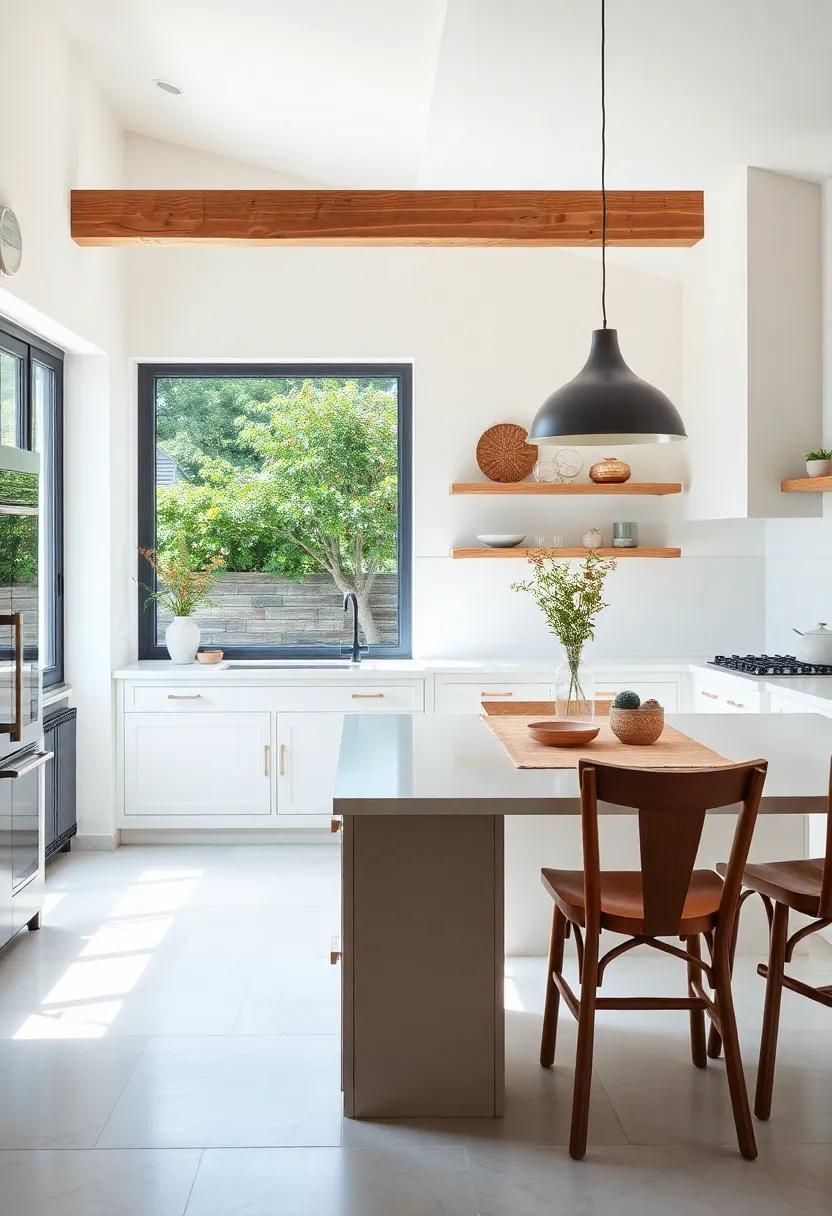
Bringing together the comforts of indoor living with the serenity of outdoor spaces is a hallmark of European farmhouse design. Here, one finds harmonious transitions that encourage a seamless flow between the kitchen and surrounding landscapes. This is achieved through the incorporation of large windows and French doors, allowing natural light to flood in while offering picturesque views of gardens, fields, or rolling hills. Elements such as natural stone and reclaimed wood not only provide a rustic charm but also extend the aesthetic language of the home into the outdoors, creating cozy nooks that invite relaxation and connection to nature.
To further enhance this connectivity, consider these thoughtful design elements:
- Complementary Color Palettes: earthy tones used indoors can mirror the external environment.
- Outdoor Dining Areas: Create an extension of the kitchen by incorporating alfresco dining spaces just outside.
- Indoor Plants: Bring the outdoors inside with greenery that thrives in kitchen settings.
| design Element | Purpose |
|---|---|
| Large Windows | maximize natural light and views |
| Natural Materials | Create a cozy, integrated feel |
| Open Layouts | Encourage flow and social interaction |
A Journey Through Time: Notable Design Trends in Farmhouse Kitchens
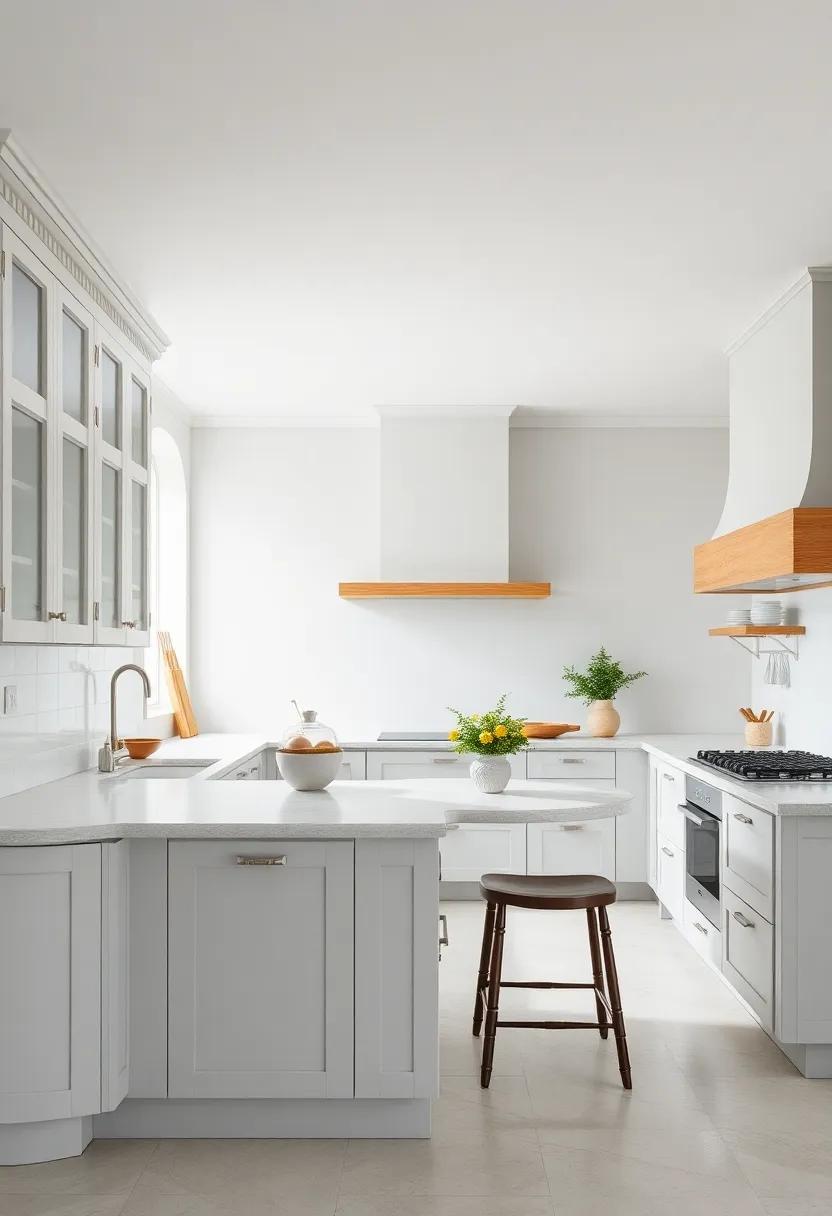
The evolution of farmhouse kitchen design is a fascinating reflection of changing tastes and innovations throughout the years. From the rustic simplicity of early European styles, characterized by wooden beams and open hearths, to the more modern interpretations incorporating sleek lines and contemporary materials, each phase tells a unique story. Essential elements like farmhouse sinks and open shelving have remained steadfast, evolving in design but retaining their practical charm. The shift from purely functional spaces to beautiful, inviting kitchens mirrors the transition of farmhouses from working buildings to beloved family gatherings, making them truly timeless.
Key trends have redefined what a farmhouse kitchen means, such as the incorporation of earthy color palettes, which invoke the natural beauty of the surrounding landscape. Many designs now feature a blend of vintage and modern appliances, ensuring efficiency without sacrificing aesthetic appeal. Common components that characterize these cherished spaces include:
- Reclaimed wood: Perfect for countertops and cabinetry.
- Giant Kitchen Islands: A multifunctional centerpiece for cooking and socializing.
- Classic Lighting Fixtures: chandeliers and pendant lights add warmth.
- Textiles: Handwoven curtains and vintage linens enhance coziness.
In Retrospect
As we draw the curtain on our exploration of European farmhouse kitchens,it’s clear that these spaces are more than mere culinary arenas; they are intimate embodiments of heritage and artistry. Each charming detail, from rustic beams to inviting hearths, tells a story of tradition woven through the fabric of everyday life. Embracing this timeless allure is an invitation to savor simplicity, comfort, and warmth—a reminder that the heart of a home frequently enough lies in its kitchen.Whether you’re inspired to recreate a bit of that rustic magic in your own home or simply drawn to the beauty of these designs, the essence of the European farmhouse kitchen extends beyond aesthetics; it invites a way of living that celebrates togetherness and nurtures the soul. So let us carry this inspiration into our own spaces, cherishing the blend of history and modernity, where the charm of the past continues to inspire our culinary journeys today.
